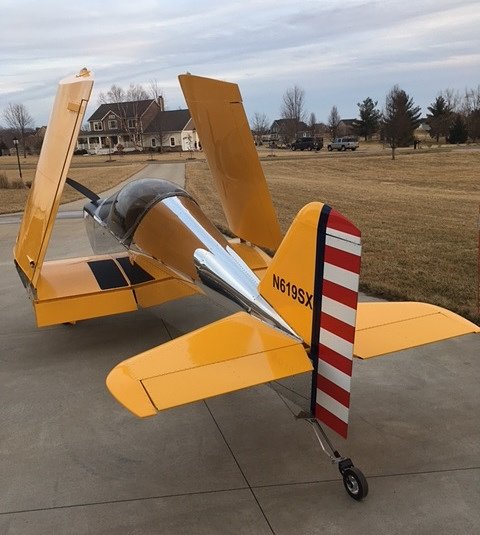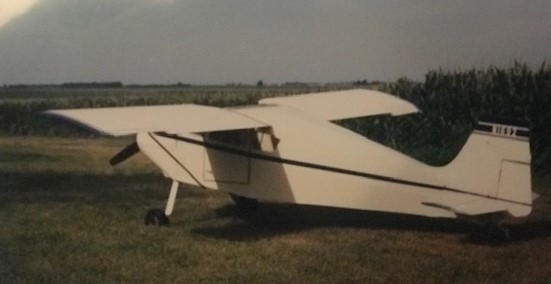At this Saturday's meeting, following breakfast, air traffic controllers from PIA will give a special presentation concerning 3MY.
At the March chapter meeting, Rob Meyer, our coordinator for the Ray Scholarship program, announced our chapter had again been selected for a Ray award and that four candidates, ages 17 to 19, had already been identified. The selection committee of five members has now interviewed all the candidates and found it a difficult decision because all were strong candidates. Jolene Miller has been nominated, and she has submitted her application and associated documents to EAA HQ. Approval by HQ is expected soon.
At the chapter meeting, a motion was approved to give each of the three candidates not selected $1,000 to continue their flight training. We did this last year, and Brady Neuhalfen went on to complete his Private Pilot at Marshall County. Accordingly, funds have been sent to the Bradley Flying Association for each of the runners-up: Conner Newnam, Logan Turner, and Tanner Bradshaw. Each of these young men are currently taking instruction at BFA, and we have encouraged them to attend our monthly events.
The VMC Club meets this Sunday, and the topic this month from PilotWorkshops is how one might practice rejected take-offs. The IMC Club meets the following Sunday. Both will be held in the hangar.
Donations are running a bit behind last year's pace, but they had been better than average the previous year. Kent Lynch has pointed out changes in the Caterpillar matching gift program. Payments will be quarterly, and the minimum for a match is now $25.
This past month, someone dropped off a red tube bender and a gray strap steel bender. We'd like to thank you; please confess.

The chapter president encourages members to review and vote on the proposed new logos for the chapter. These were presented in last month's news. We plan to offer new coffee mugs, shirts, and patches with the new logo once selected.
Ron Wright's hernia operation was successful as was Kent Lynch's knee replacement. Rob Meyer's torn knee continues to improve.
Rob and Jeff Meyer are nearing the first run of their UL-Power engined Onex.


Morrie Caudill, who flies a VW powered Onex, commented "It's a fantastic installation." Ahead, "Jeff is having the typical problem getting insurance on the Onex. They want 50 hours of tail dragger time plus time in a Sonex. Even then the price is north of 3k... They are thinking another month of tweaking and it will fly for the first time at Marshall County."
One of Ron Wright's early projects is described by him this month:
After already having purchased a '47 Taylorcraft BC-12D and flown it for a couple years, I decided that I wanted to build an Experimental aircraft and found a Cougar-Tailwind that looked like it would not take too much effort to get back to a flying condition. So we made a trip to Savanah, GA to look at it, and based on what the EAA guys there told me about the history of that plane, I bought it.
The Cougar was an almost exact, "illegal" copy of the Wittman Tailwind design. The major difference was that the original Cougar main landing gear was attached to the lower fuselage longerons, but this inferior design caused the main gear to collapse on the early Cougars built, which made that plane become very unpopular. However, some of the Cougar builders adapted the Tailwind main landing gear design to fit the Cougar motor-mount, and that system corrected the original Cougar landing gear flaw, so that several Cougars could be finished and flown safely. These became known as Cougar-Tailwinds. There were no flaps in the Cougar design. The designer of the Cougar made his plans available for free, whereas the Tailwind plans cost around $150. I assume the Cougar designer was attempting to kill the Tailwind from becoming popular?
After getting it back home and doing a complete inspection by me and a very knowledgeable airplane guy, he suggested we:
and then give it a new paint job—and letís not forget about adding instruments, lights, and comfortable seats! Oh, and what about adding a radio and some navigation instruments, too!

So, what I thought was going to be a quick and easy rejuvenation turned out to be an intensive total restoration. The first thing I had to do was sell the T-craft, to raise money to pay for the upcoming restoration. It took a year of full-time effort on the part of Tude Mickle and part-time help from his son Larry—and me—to get that project finished. As it turned out, I learned a lot about what it takes to build an experimental aircraft.
Back then (mid '80s) I had about 300 hours of total flying time in C-150, C-172, C-182, C-310, Taylorcraft, J-3 Cub, and the 2 place Luscombe. As I recall, flying the Cougar-Tailwind reminded me that it handled more like the Luscombe—responsive, quick, and very sensitive during any landing. It was FUN to fly, but you did not want to forget that you, the pilot, needed to pay attention to controlling that plane at all times!
One problem showed up after this plane was finished and flyable: I was too tall to sit in the pilot seat for more than about 30 minutes. Yikes! So, this beautiful plane found a new owner, but I had gained a ton of miscellaneous information about building an experimental aircraft. From that time, I have had the privilege and opportunity to rebuild, restore, or refurbish—with the help and assistance of a lot of EAA Chapter 563 guys, like Greg LePine, Morrie Caudill, Rich Gilbert, and a host of others—an additional 25 Experimental aircraft! How lucky can a plane-nut get?
Honorable mention also needs to go to my wife Inge for her patience and understanding all these years, and to my son Marc who helped me sand blast all the metal parts on the Cougar/Tailwind. Marc recently retired from the U.S. Army as a Lt. Col. after serving for 22 years—where does the time go?

At a private airfield near Delavan
Roy Paget was present at the March meeting and said progress on the Sankoty seaplane base has been hampered by the pandemic. He also described the area around the proposed base.
The Airport Authority sent along a scan of a pamphlet from the 128th Air Refueling Wing. They are based in Milwaukee and fly Air Force tankers around the Midwest, including PIA. The topic is avoiding collisions in the air. This pamphlet (0.5 MB) will be stored for a few months on the chapter's web site.